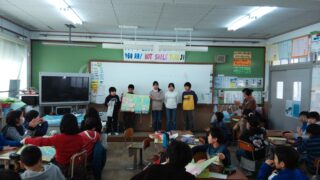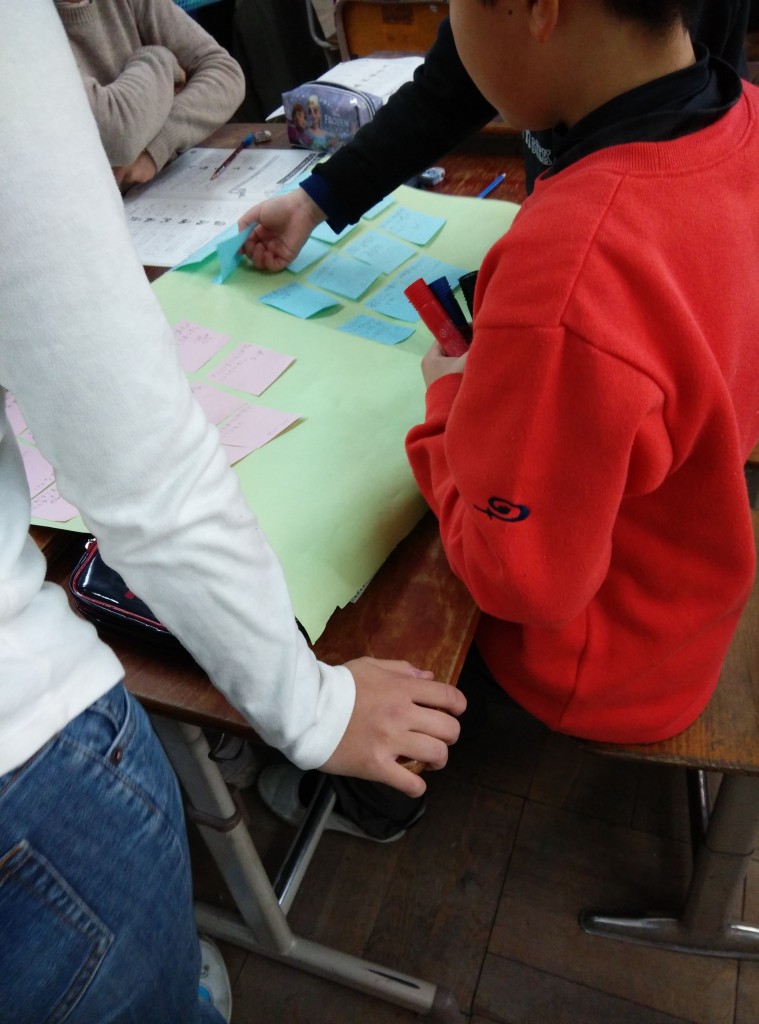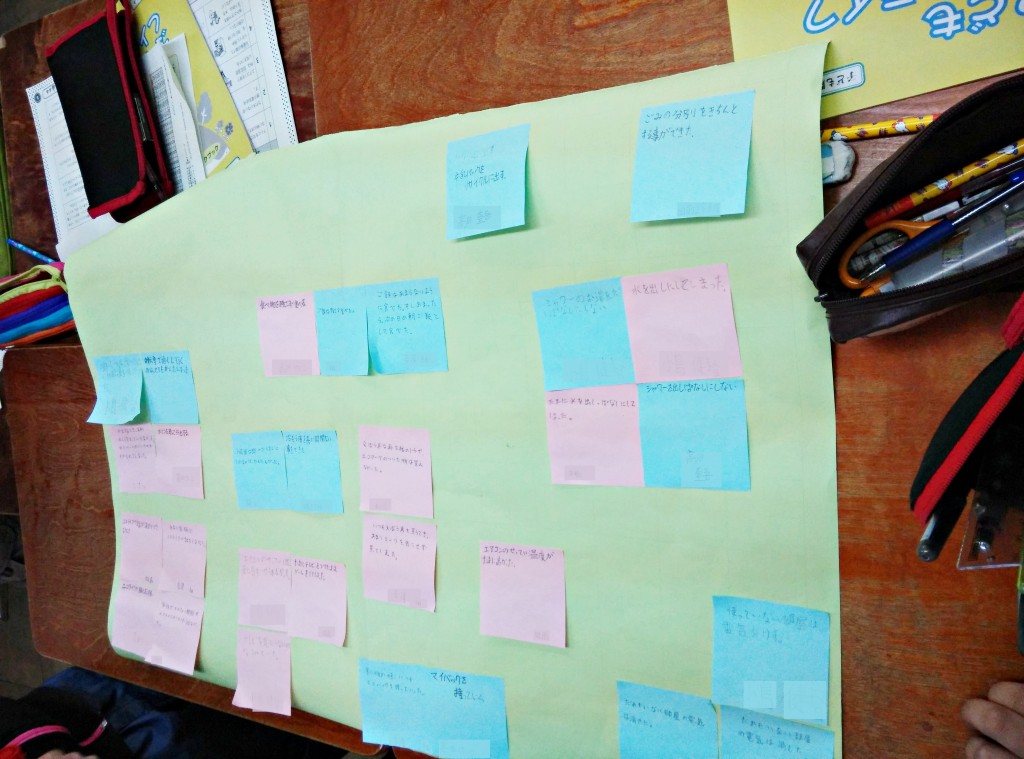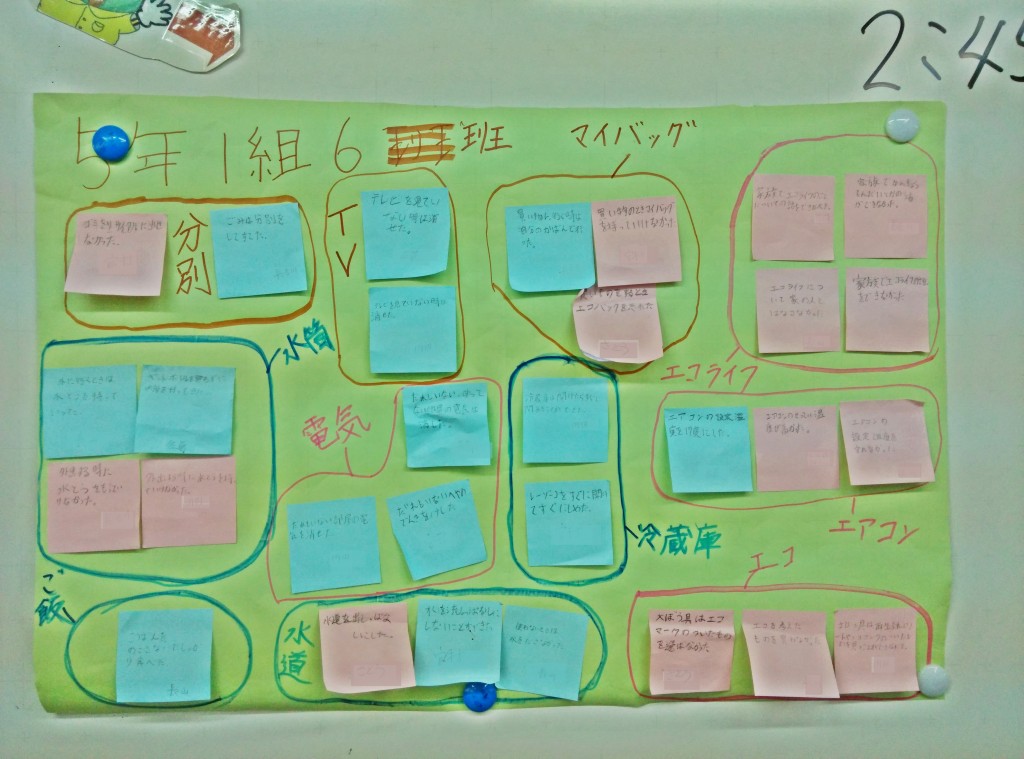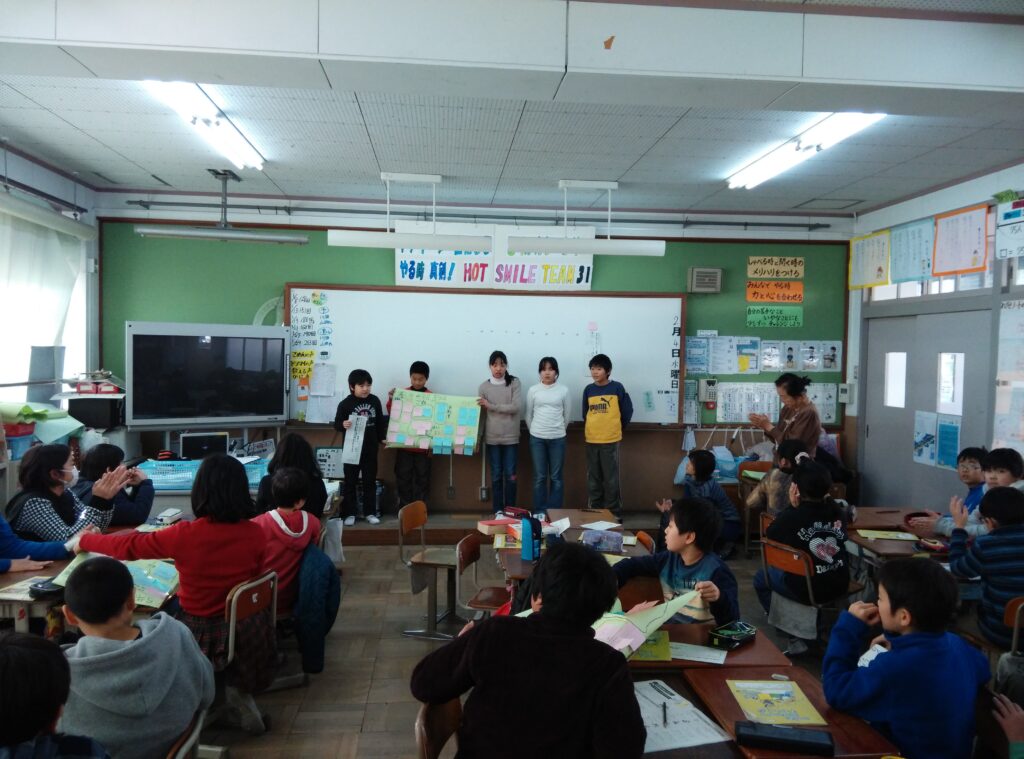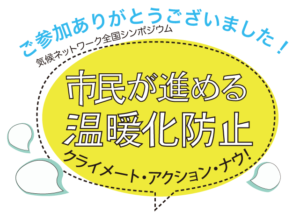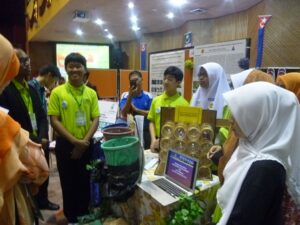オランダのハーグ大学から気候ネットワーク京都事務所にインターンしているTKです。
こどもエコライフチャレンジ
2月4日、気候ネットワークはボランティア3名と一緒に温暖化防止のためのワークショップを実施しました。ワークショップに参加したのは北大路にある紫明小学校の児童です。10歳から11歳の5年生が対象でした。
ワークショップは「エコライフチャレンジ」と呼ばれ、「事前学習」、「実践学習」、「振り返り学習」の3段階で構成されています。この日は振り返り学習の日でした。
こどもエコライフチャレンジ・振り返り学習会
振り返り学習はいくつかのパートに分かれています。児童は4人ずつの班に分かれて学習します。パート1では導入で、気候ネットワークのスタッフが気候変動のトピックを紹介します。この日の話者、深水さんは温暖化の結果として世界で起きていることについてのおさらいをしました。そして、温暖化の原因が何であるかを説明しました。最後に、深水さんは地球の平均気温の上昇を2℃以下に抑えることの重要性を話しました。過去のCO2の排出が世界の平均気温に甚大な影響を与えたことを児童に示しました。地球の気温は過去132年間で0.85℃上昇したのです。
パート2では、児童のワークブックとエコライフ診断書が深水さんやボランティアスタッフから配布されます。
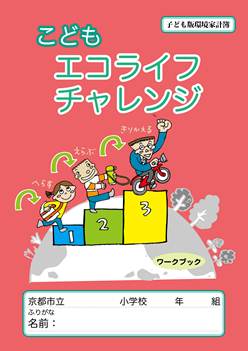
このワークブックには、児童が冬休み中に実施した温暖化防止のための取り組みについて書いています。例えば「エアコンの設定温度を20度以下にする」、「部屋を暖かく保つために断熱シートを使う」などです。深水さんは児童に冬休みに調べた電気の使用量を尋ね、京都市の平均使用量と比較しました。児童の使用量が京都市の平均より高い場合、この問題について家族で話し合って電気の使用量を減らす方法を考えるように促しました。
児童は大きな緑の紙の上に冬休み中に取り組んだことを書き出すように言われ、みんなで取り掛かりました。取り組みをできたこととできなかったことに分け、青い付箋にはできた取り組みを、ピンクの付箋にはできなかった取り組みを書いて貼り出しました。下の写真は、真剣に取り組み書き出しているところです。
パート3では似た取り組みを探して、グループを作ります。できた取り組みとできなかった取り組みで一つのグループをつくります。この写真は、班の作業が終わったところです。
パート4では、分けたグループに名前を付けます。例えば、テレビに関する取り組みや、エアコンに関する取り組みがあります。この写真では、児童がそれぞれのグループにつけた名前が分かります。次のパートは、最後から2番目にあたるパートです。児童はこれから挑戦することを発表します。冬休み期間中にできなかった取り組みが中心になっています。
ワークショップの最後に班の発表があります。それぞれの班が、取り組みについて発表します。これは児童たちにとって他の班の取り組みについて考えるきっかけになります。そして、早い段階で取り組みについて議論するための絶好の機会です。
ワークショップの間、児童はみんな熱心に参加していました。紫明小学校の児童は、一人ひとりの取り組みを通じて世界を変えることに意欲的になったように感じました。それはきっと、児童たちの子どもたちの代まで続いていくのだと思います。
TK-san
※写真撮影は先生の同意を得て行いました。
Shimeishougakkou Educational Program
On February the 4th, Kiko Network and three volunteers gave a workshop about climate change prevention. The school that the team attended, was Shimeishougakkou at Kitaoji. The team held a workshop for fifth graders, aged 10 and 11. The name of workshop was ‘Ecolife Challenge’. Eco life challenge consists of three parts. Preliminary learning session, practical session and reflective learning session. On that day, the students took part in the reflective learning session. The reflective learning lesson was divided in several parts. The students were split up into several groups. Each group consisted of four students. Part 1 is the introduction, where an employee of Kiko Network introduces the topic of climate change. On that day, it was Fukamizu-san. She reflected on what is happening right in the world as a result of global warming. Furthermore, Fukamizu-san explained what the causes are of global warming. At the end, Fukamizu-san expressed the importance of keeping the global temperature rise below two °C. Over the past centuries, studies has shown that CO2 emissions have an atrocious effect on the global average temperature. The temperature of the earth is increasing by 0.85°C in the past 132 years.
In the second part of the workshops, the student’s workbook and Ecolife report were handed out by Fukamizu-san and the volunteers. Each student wrote in his or her workbook what kind of prevention action they committed during the winter break. As an example, two prevention action were introduced. Such as setting the air conditioner temperature below 20°C and using an isolation sheet to keep the house warm. Therefore refraining the residents from increasing the temperature at home. Additionally, Fukamizu-san asked the students to check the electricity usage quantity and compare it with the average usage quantity in Kyoto. If it so happened that the usage was higher than the average in Kyoto, the students were requested to discuss this matter with their family and contemplate on how to decrease the electricity usage.
The students were asked to post their prevention actions on a large green paper. Every student’s prevention actions were posted. Their prevention actions were divided into two parts: did and did not do. The blue post-its showed the prevention actions that the students carried out. The pink post-its show the preventions actions that the students did not carry out. In the picture on the left, you can see that were very busy in dividing their prevention actions.
Part three consisted of finding similar actions and forming a group of them. The purposed group was formed by prevention actions the students did do and did not do. A group of students has completed their task, as seen in this picture.
Part four composed of naming the group the students had just formed. For example, prevention actions that were mainly concerned about the television or air conditioner. You can see in this picture that the students named their formed groups.
What follows next is the penultimate phase of the workshop. The students held a presentation on how to challenge themselves in the future. This mainly consisted of the prevention actions that they could not achieve during the winter break.
The final presentation was the end of the workshop. Each group presented their group’s prevention actions. This opportunity allowed the students to reflect on the other group’s prevention actions. In addition, it was the perfect moment to discuss early mentioned actions. All students participated eagerly during the workshop. It seems that the students of Shimeishougakkou are keen to change the world. Not only for themselves in the near future, yet also for their own children.
TK-san
*All of the pictures were taken with the consent of their teacher.
この記事を書いた人
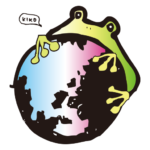
- 気候ネットワークに所属されていた方々、インターンの方々が執筆者となっております。
最新の投稿
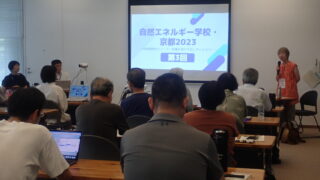 インターンの声2024年1月31日インターン生によるブログリレー第3弾~様々な体験を得られた8か月~
インターンの声2024年1月31日インターン生によるブログリレー第3弾~様々な体験を得られた8か月~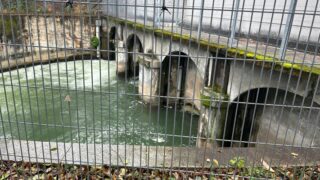 インターンの声2024年1月22日蹴上発電所の見学会に参加してきました!
インターンの声2024年1月22日蹴上発電所の見学会に参加してきました! インターンの声2023年12月28日インターン生によるブログリレー第2弾~地域も日本も世界も知れた8ヵ月~
インターンの声2023年12月28日インターン生によるブログリレー第2弾~地域も日本も世界も知れた8ヵ月~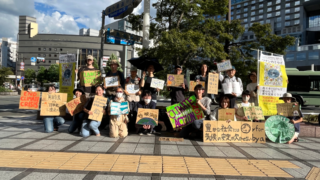 インターンの声2023年11月30日インターン生によるブログリレー第1弾~スタンディング・気候マーチに参加して~
インターンの声2023年11月30日インターン生によるブログリレー第1弾~スタンディング・気候マーチに参加して~
